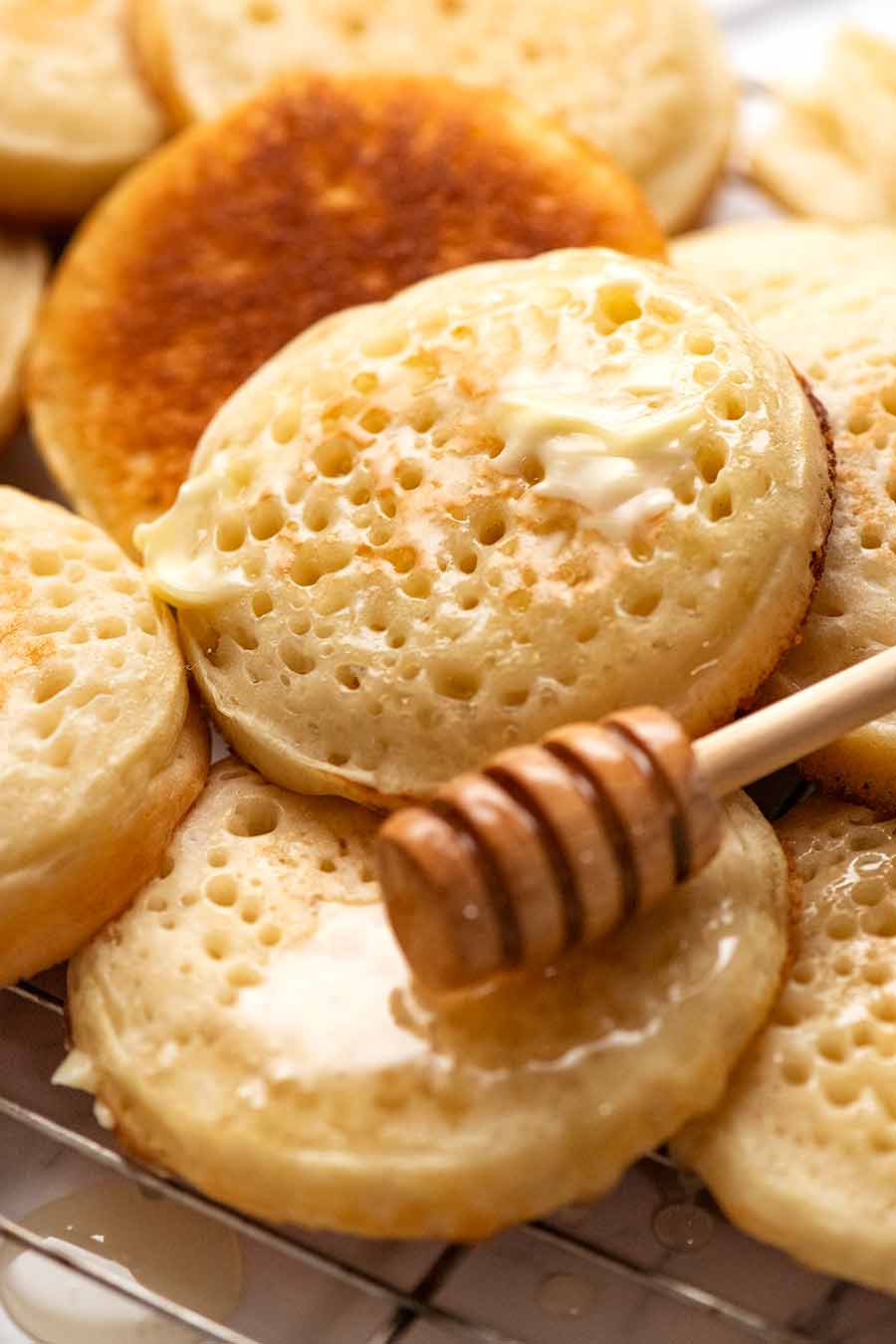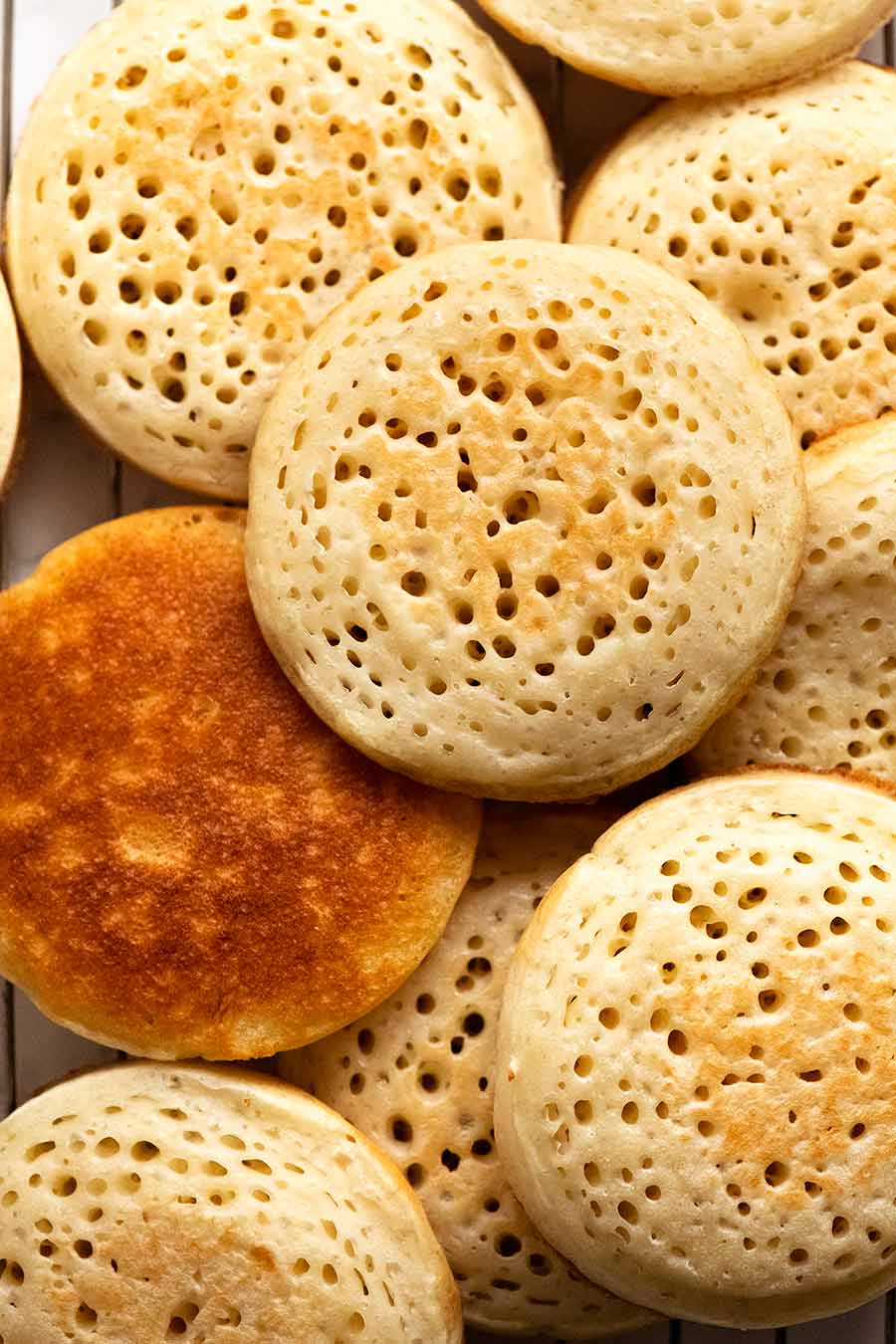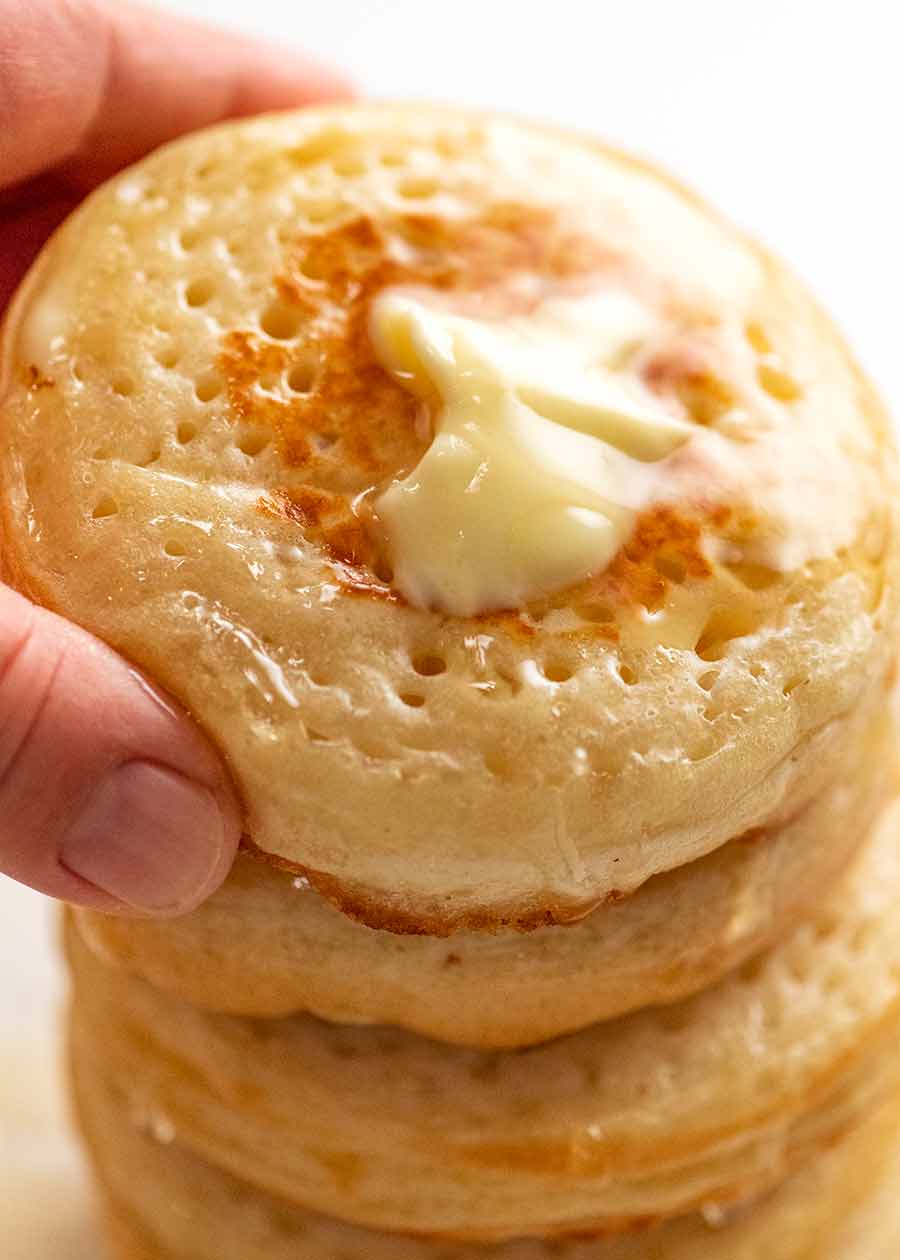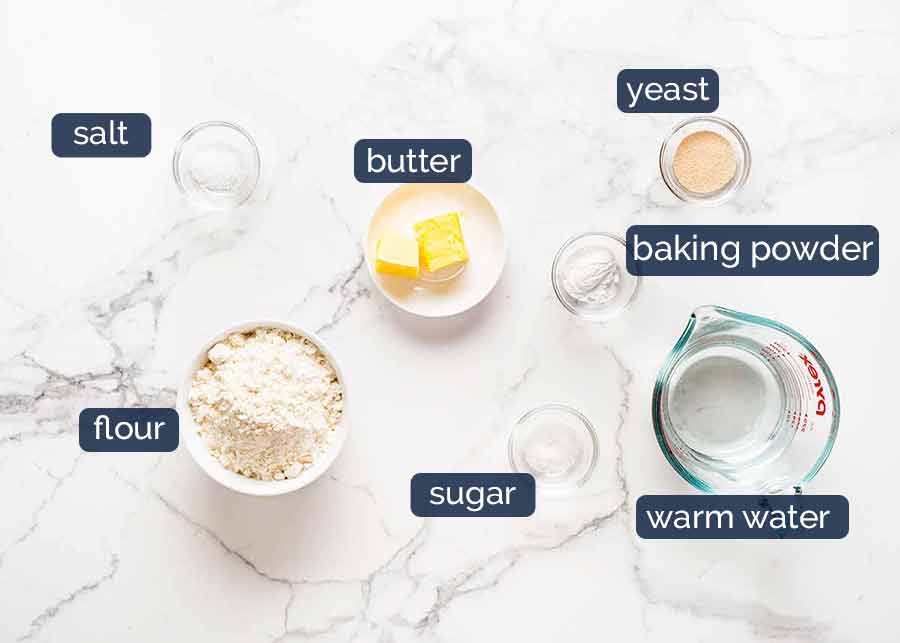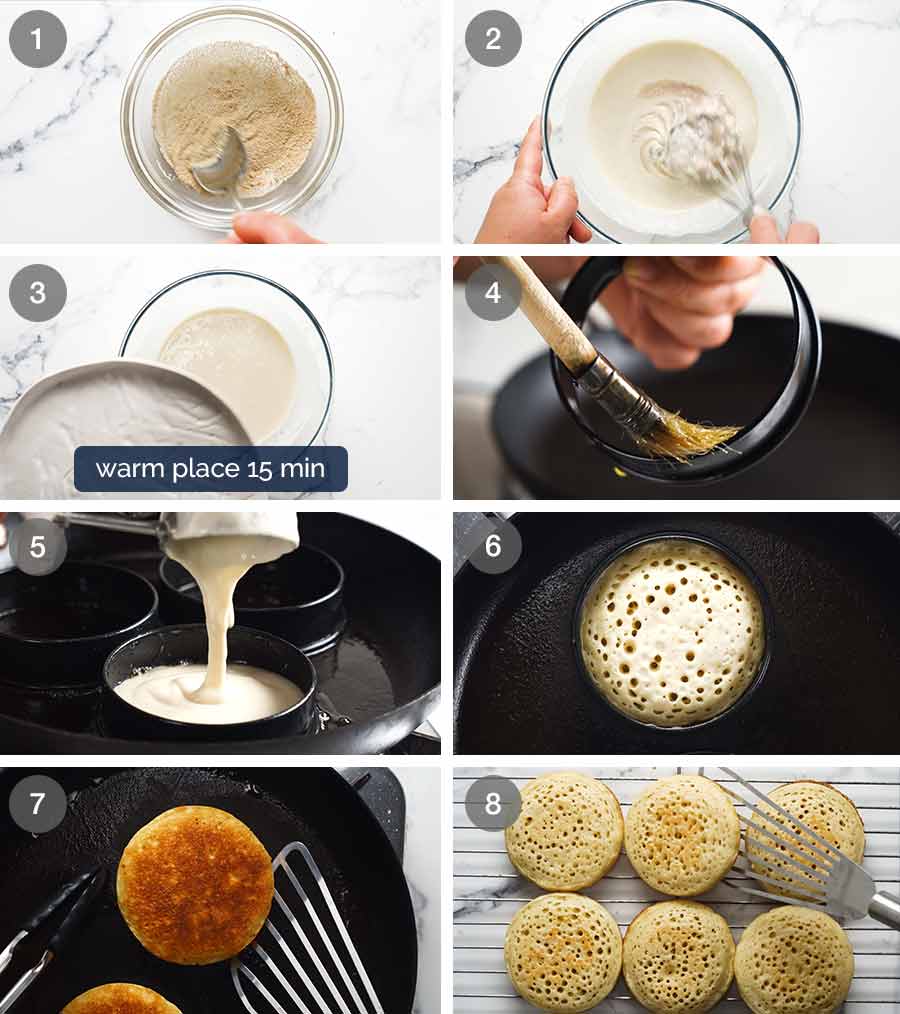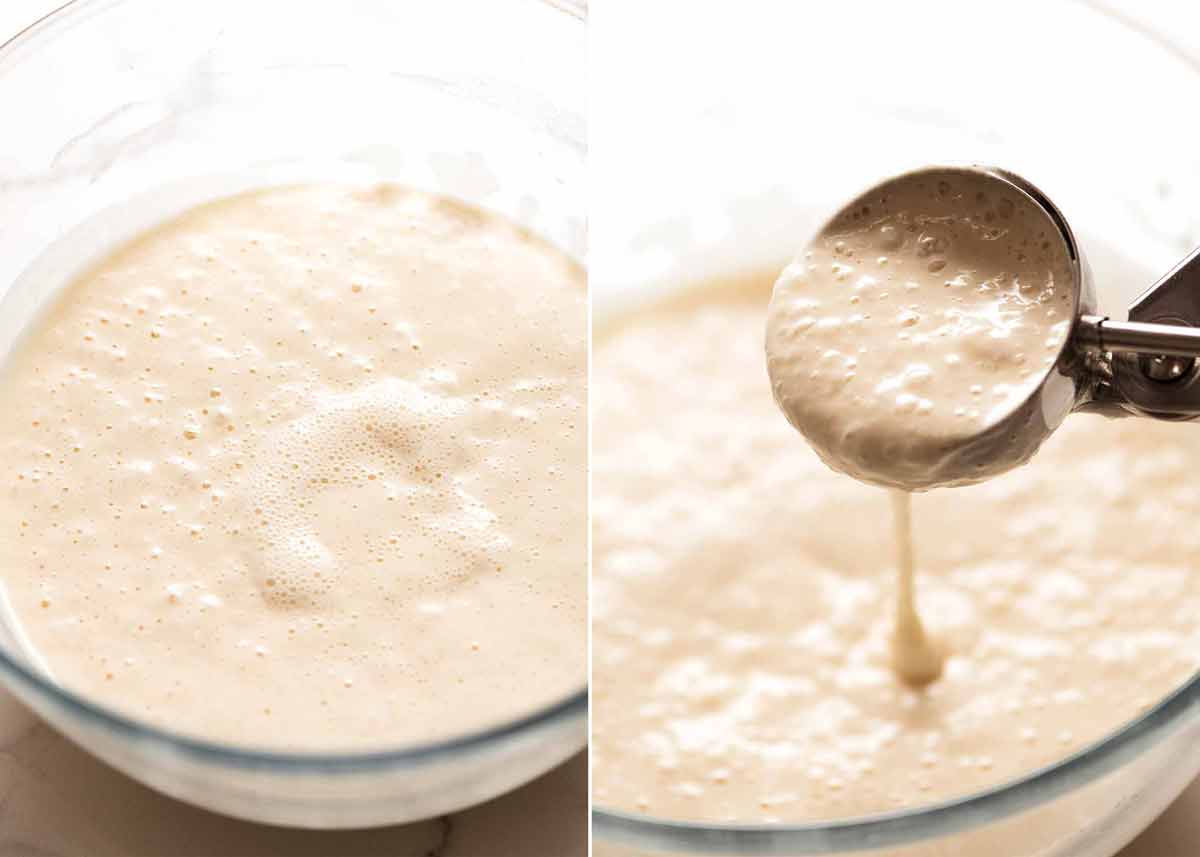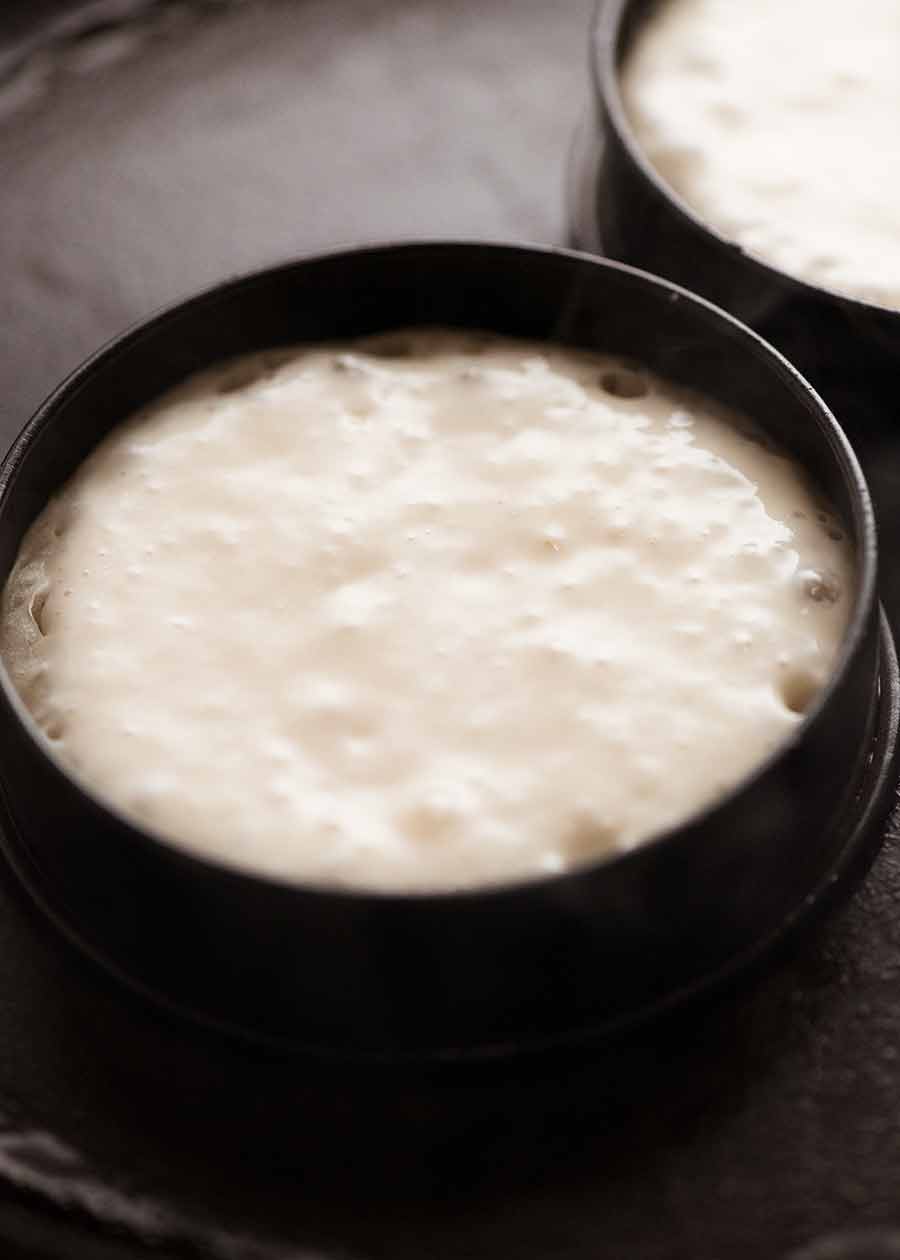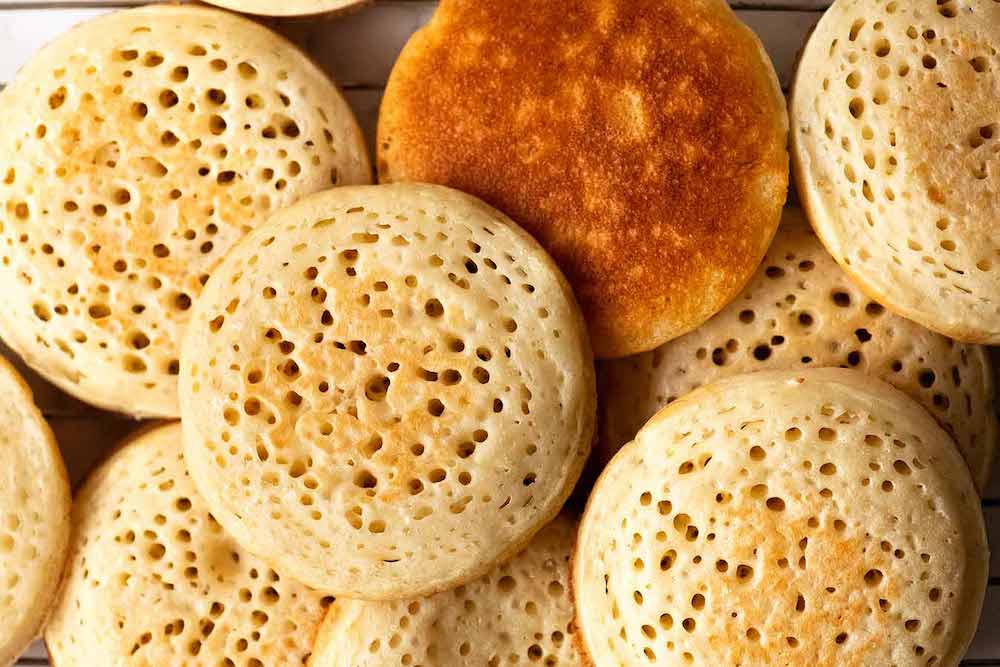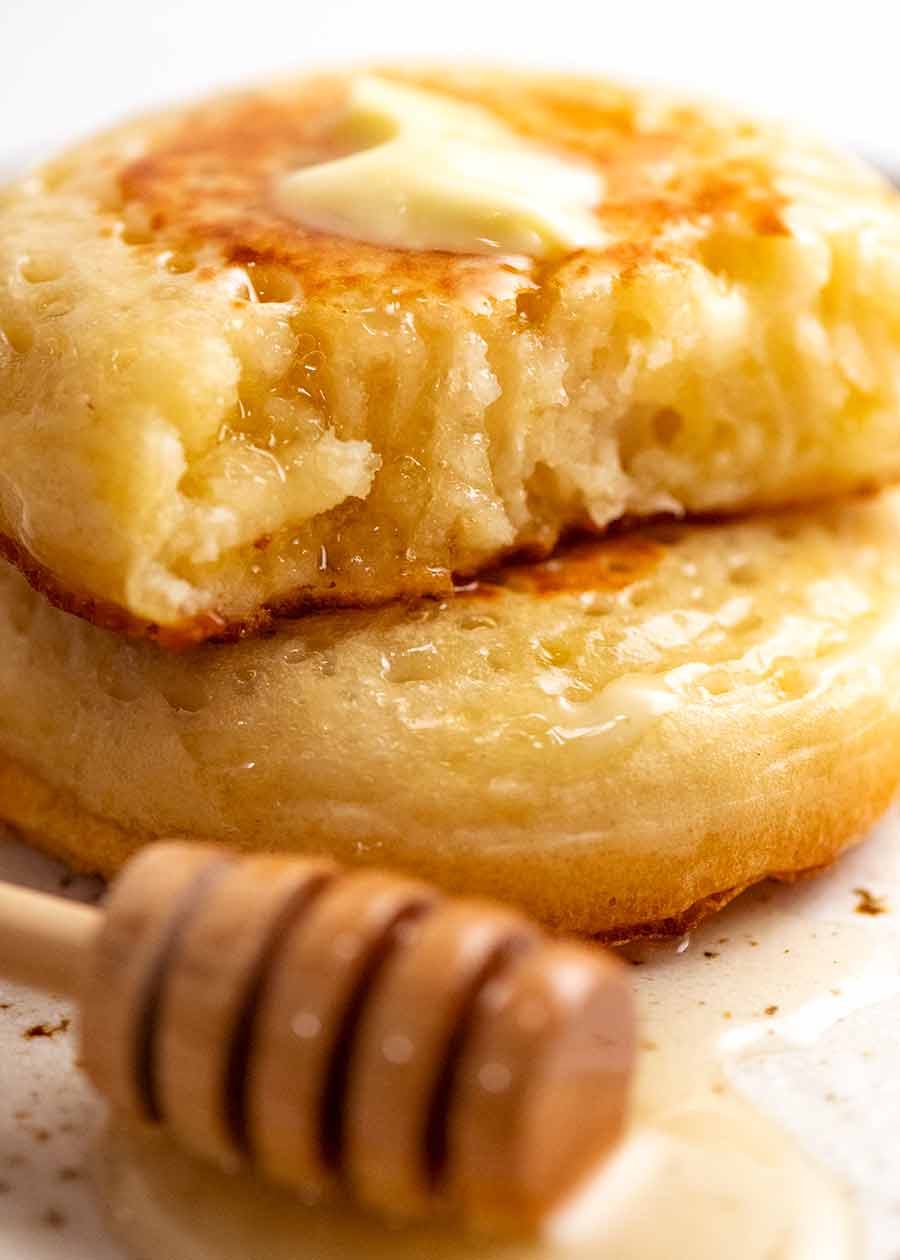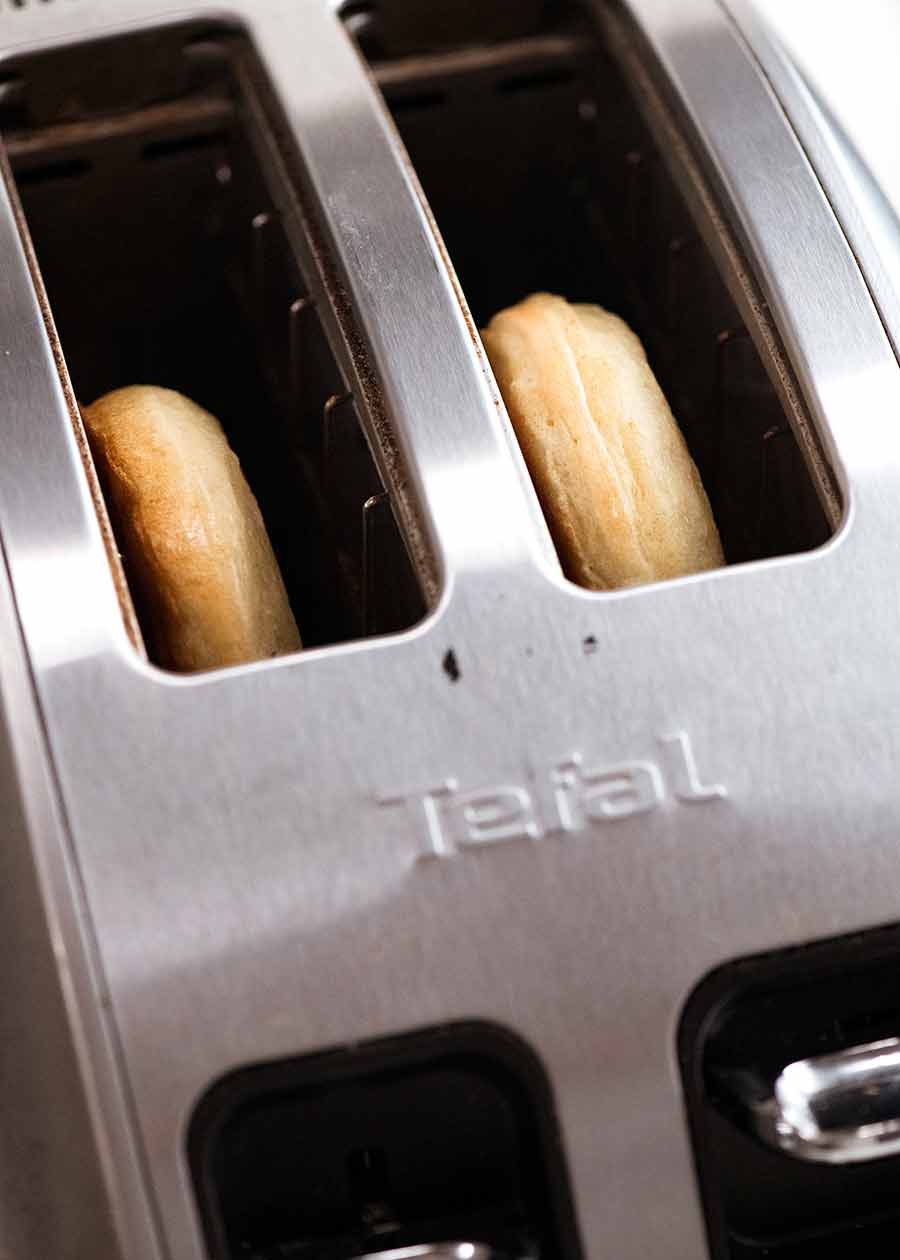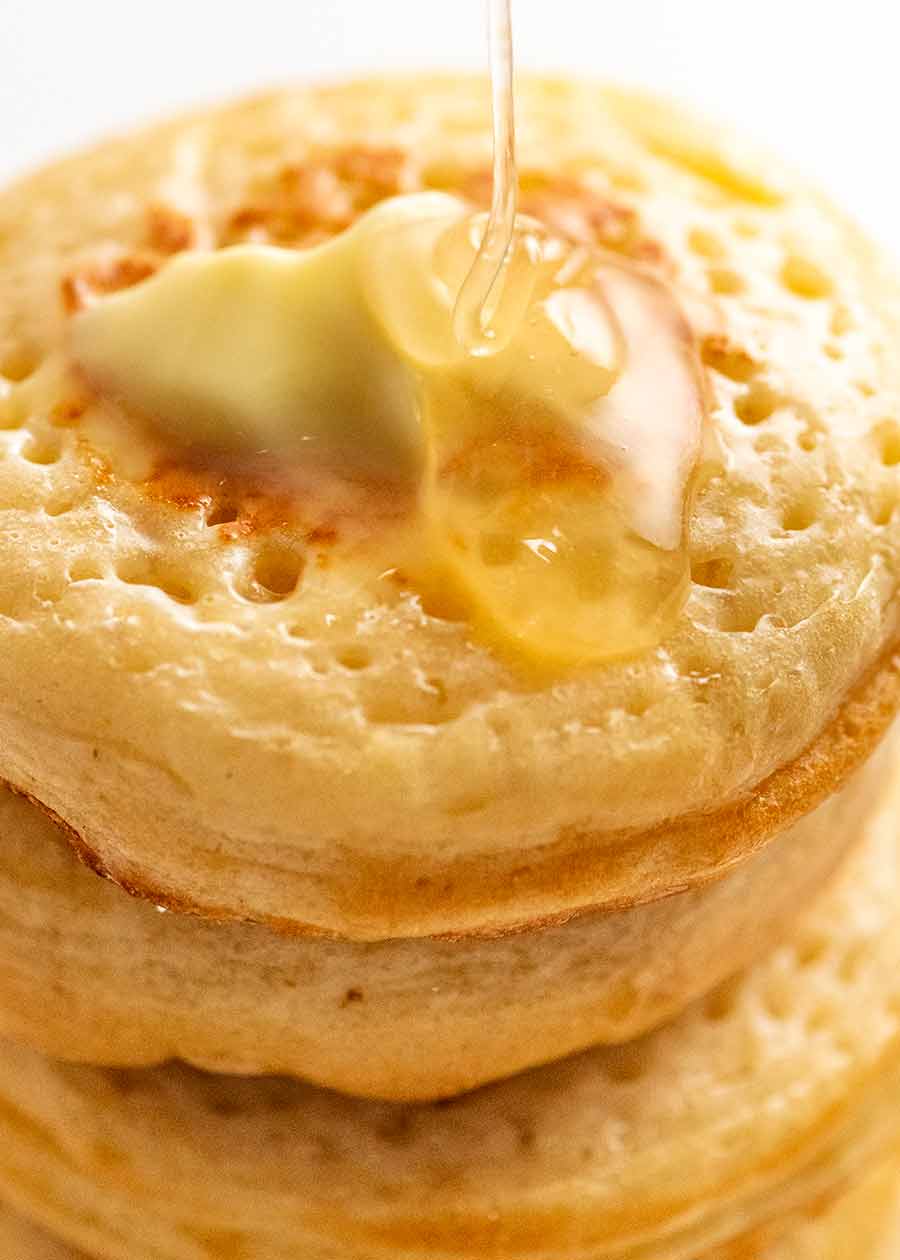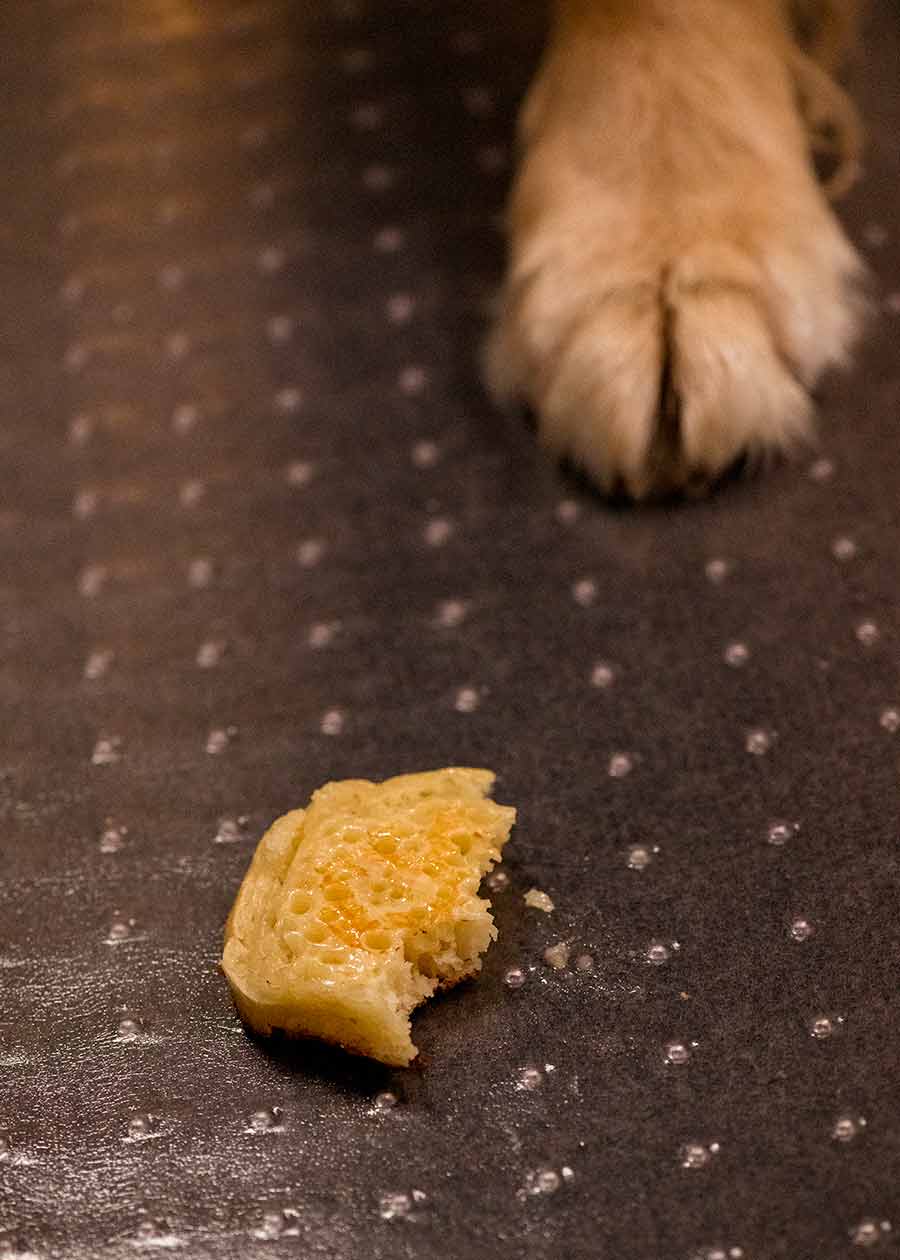Crumpet recipe
Warburtons is the UK’s biggest and most popular commercial crumpet producer. They make over 700 million of them a year! To cheer up the UK public during lockdown, they shared their secret crumpet recipe for people to make at home. Though I doubt it’s the precise commercial batter recipe (they probably adapted it for the home cook), the end result is EXACTY like store bought crumpets. After many, many, MANY failed crumpet attempts over the years (even from notable chefs!), I am still shaking my head at how astonishingly perfect these crumpets are – and how easy they are to make!
What are crumpets?
Hailing from England, they’re like a cross between an English muffin and pancakes. Their distinguishing feature is the surface that’s riddled with holes which allows butter to permeate through from top to bottom. The surface has a unique almost “spongey” texture, but it’s very fluffy inside, just like bread!
What goes in crumpets
Here’s what you need to make crumpets. I always knew yeast was in the batter. The addition of baking powder was the key that made all the difference – from crumpet making fails to crumpet making success!
Yeast – use instant / rapid rise yeast or active dry yeast (sometimes just labelled “yeast”). Both work just fine. Fresh yeast? Haven’t tried with fresh yeast but see no reason why it wouldn’t work using the standard conversion of 7.75g / 0.275 ounces fresh yeast per 1 teaspoon of dry yeast. Crumble into warm water with sugar and follow above directions for active dry yeast. Flour – just normal plain / all purpose flour. Not self raising flour, not wholemeal flour. Gluten free – unfortunately doesn’t work with gluten free flour. We tried, and it was a dismal failure!
How to make crumpets
Here’s how to make crumpets in 3 easy steps: It is quite straightforward, but because homemade crumpets is a bit of a unique recipe, I’m going to add a bit more information about each step in the proceeding sections. If you’re not interested, jump to the recipe! (Or video – or Dozer 😂)
The crumpet batter
The crumpet batter is literally a dump-and-mix job, though you do need to mix well for a couple of minutes by hand (or half that time using a handheld mixer) which I assume is to get good gluten formation to get that signature chew for any type of yeast bread, as opposed to being “cakey”. Then once mixed, you simply put it in a warm place so it gets nice and foamy. This is the equivalent of dough rising so the crumpets rise when they’re cooking. The crumpet batter won’t increase in volume very much – just around 10 / 15%.
Crumpet rings
Crumpet rings are a “thing”. They are around 9 cm / 3.5″ wide and about 2.5cm / 1″ tall. The ones I have are non stick, but they come in silver too. But honestly, anything metal and round will do the trick – egg rings, biscuit cutters, scone cutters, even cleaned large tuna cans. Actually, it doesn’t even have to be round! Star shaped crumpets, anyone??
Cooking crumpets
Now, I’m not going to lie to you – you probably won’t nail the first one. It does take practice – but no more than when you first started out perfecting the art of golden fluffy pancakes or pikelets! The secret to cooking crumpets perfectly is to start them off on a high heat to get those bubbles activated, then turn the stove down so the crumpet cooks through without burning the base. The cooking technique is one change I made to the original Warburtons recipe – they say to cook on medium high the whole time = scorched base. Though store bought crumpets don’t have colour on the holey side, I like to flip to get a blush of colour on it and cook any residual raw batter.
And here’s a close up of the inside of the crumpets with the signature vertical “tunnels” from the holes!
Even better the next day!!
An essential step with crumpets is to cool them completely, otherwise they are kind of moist and “doughy” inside. In fact, if you want an absolute dead ringer for store bought crumpets, they are best made the day before, or the day before! They keep for days in the fridge – I’ve kept them for 5 days and once toasted, they are perfect. Can you freezer homemade crumpets? They freezer perfectly too. Thaw or even microwave thaw, then toast as usual!
How to eat a crumpet
I realise that writing about how to eat crumpets may induce eye rolling from Crumpet-Eating-Experts. But bear with me – not everyone has been eating crumpets all their life! Toasting is essential to make the golden base crispy. Then slather with butter (what do you think all those holes are for?? So the crumpet gets soaked with butter, from top to bottom!) then spread of choice.
What to put on crumpets
As far as what to put on crumpets (other than the mandatory butter) – honey is by far the top choice (think – hole seepage). My personal second choice is Vegemite (it’s an Aussie thing 🇦🇺), followed by jam. Other spreads like Nutella and peanut butter go great too – whatever you put on toast, you can put on crumpets! Though if you want the ultimate crumpet experience, don’t go past butter and honey. That moment when you bite into the crumpet and salty melted butter and sweet molten honey squirts into your mouth… Arrrgh … I’m torturing myself at the thought. I’m off to toast another crumpet for morning tea! – Nagi x
Watch how to make it
Life of Dozer
And every once in a while, his patience pays off and food I’m shooting falls to the ground….
